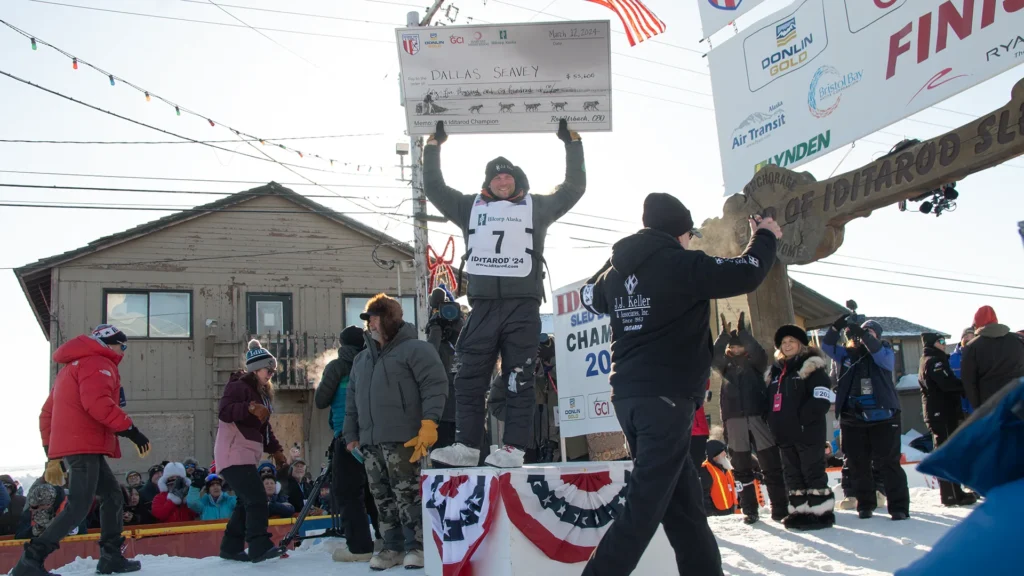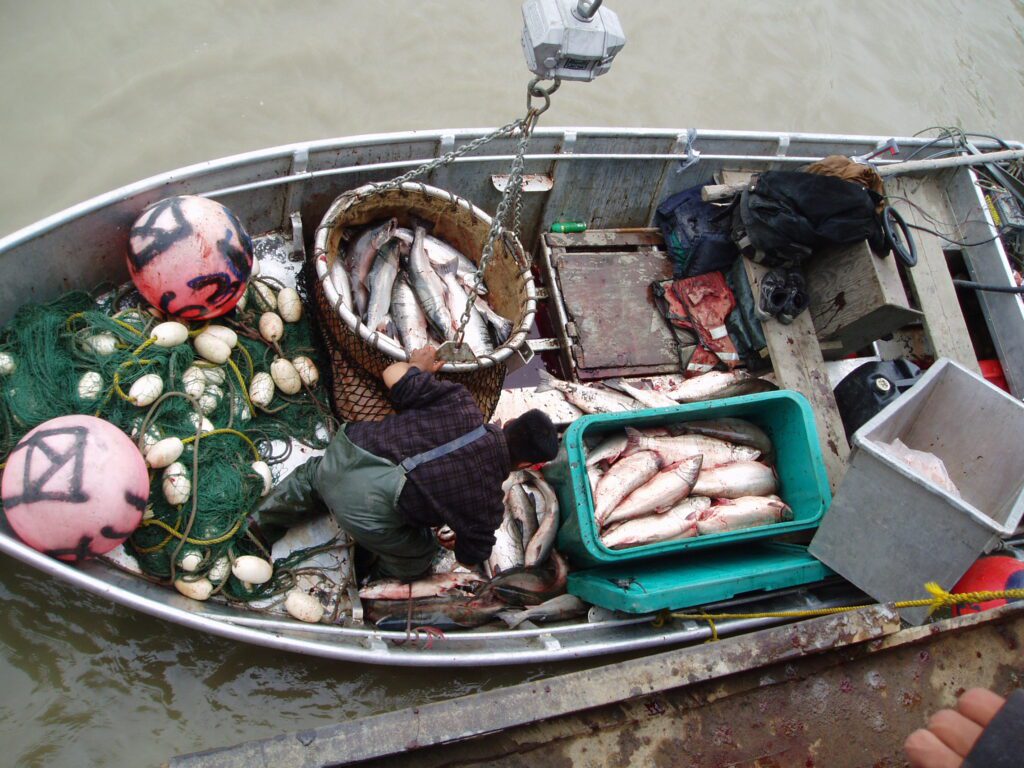Wade Marrs led two past champions into the Ruby checkpoint last night in the 2017 Iditarod. 350 miles into the trail, the racing is underway as teams plot their next moves along hundreds of winding miles on the Yukon River.
Willow musher Wade Marrs arrived first into the checkpoint a little before 7 o’clock.
“There’s a lot of people out here, am I the first one here?” Marrs asked. “You are,” the response came. “Oh wow, that’s cool,” Marrs said.
Marrs quickly tells checkers that he’s declaring his 24 hour rest.

As the first musher to Ruby, Marrs won the Pen Air Spirit of Alaska award, which comes with a special print, plus a handmade gift from Ruby residents. Marrs’s pause is brief, and he sets off to take care of his chores. Marrs quickly parks his team to settle in for some rest. He sets down beds of straw and tosses out hunks of frozen salmon, which the team devours.
“These guys are monsters, they’re screaming coming up the hill. Literally barking down the trail last night. I’ve never had a team this animated and amped up. But they definitely seem like they’re just down a notch, not on attitude, definitely, but down a notch on something.”
Teams can now take their 24-hour or 8-hour Yukon breaks as they leapfrog one another on opposing schedules. Mushers declare the breaks to checkers, but they don’t commit to it and can leave if they want to. Marrs was confident in his plan.
“Hopefully, it works out good, as long as Dallas does what I expect him to, it will work out really well.”
That is, he’s expecting Dallas to do the same as 2015, when he took his 8 hour break here, camped outside Galena, and did his 24 down the trail in Huslia.
“I have to try playing his game on him and get a step ahead of him, which we are now, which is perfect, so now, I just need to play my cards right.”



46 minutes later, Dallas Seavey arrives in all black.
“I’m going to declare a 24, and I’m going to declare an 8, and I’m going to declare I’m indecisive.”
Seavey pulls three resting dogs out of his carbon fiber sled and sprints up and down the gang line, doing chores. He throws down thin pieces of foam — camping pads, a novel addition to the straw-piles used to to keep the dogs cozy.
The stretch from Tanana to Ruby is the longest on the trail, nearly 120 miles. Along the way, both Seavey and Marrs rested for about four hours to break up the journey. After leaving Wednesday morning at 1:00 a.m., the two camped near each other for a morning rest, and hours later found themselves parked a few feet from one another in Ruby. That was close enough to swap race plans — or at least tentative race plans — as they worked along their dog-lines.
“You taking your 24?” “I think so, yeah. Why not? It’s cold out there.”
Seavey says the critical 24-hour break should be tailored to the specific team and ultimately involves making a bet on the trail to come.
“If I felt the trail was going to be bad, I would have gone farther. It’s a little bit of a bet that the trail is good, and it’s going to benefit me to have a good trail, particularly when it comes to being able to rest dogs in the sled. That’s the short version.”
Dallas’s dad, Mitch Seavey, pulled into Ruby third and says he’ll be sticking around for four to six hours.
“There’s nothing about this team that needs to be 24’ed right now.”
The elder Seavey pulls two dogs out of his sled that he’s rested along the way, on a schedule he described as “secret.”
The next two mushers were cagey, as well. Nicolas Petit arrived fourth, wearing a polar bear ruff from Kotzebue. He was put off by the steep hills and sharp turns getting back out onto the trail, and didn’t think it was a safe idea to attempt with a super-charged dog-team.
Arriving in fifth, Joar Ulsom was less committal about his plans.
“It’s always good to declare your 8-hour break, because if I was to oversleep, nothing bad would happen. We’ll see.”
Ulsom was relatively upbeat, saying he got a relaxing, hour-long nap in while the sun was up and felt wide-awake.
As the sleepless nights add up, mushers will focus on avoiding mistakes and exploiting any they see by their competitors.








